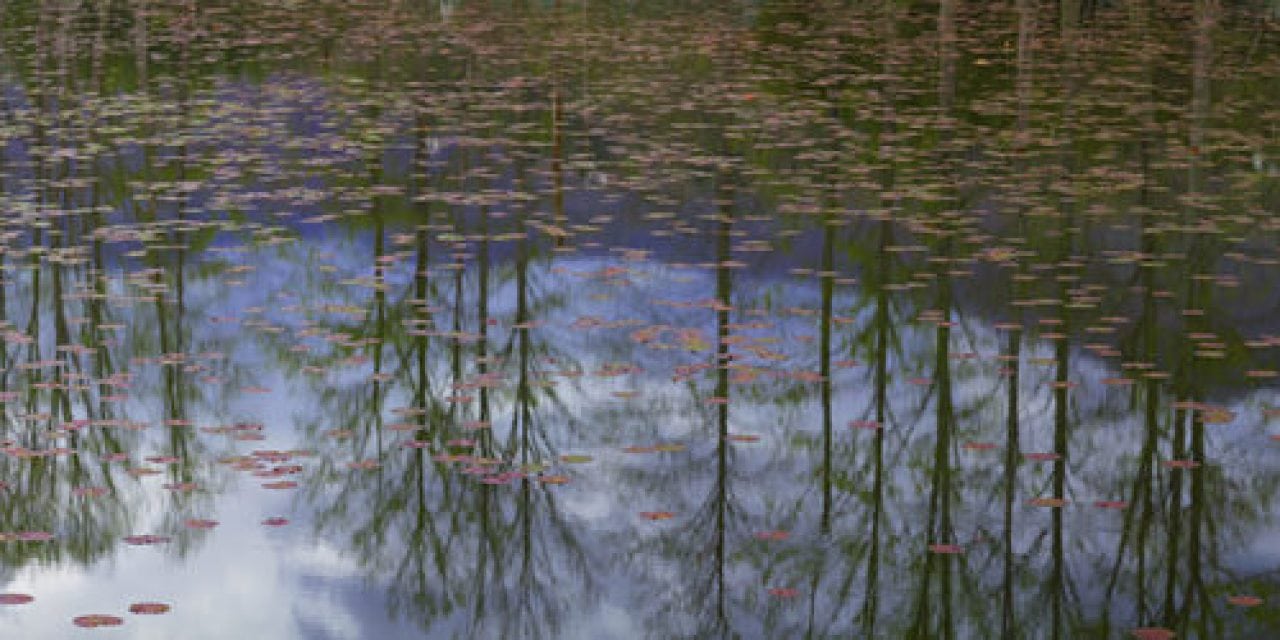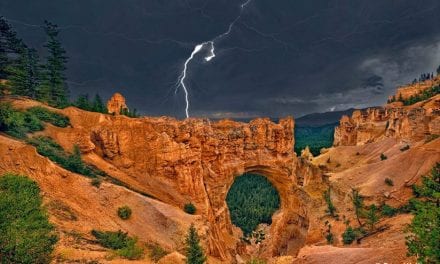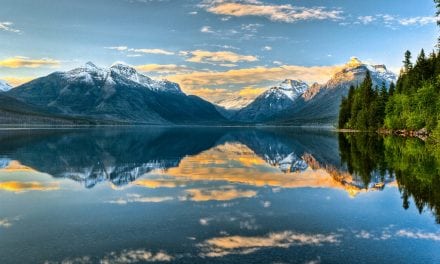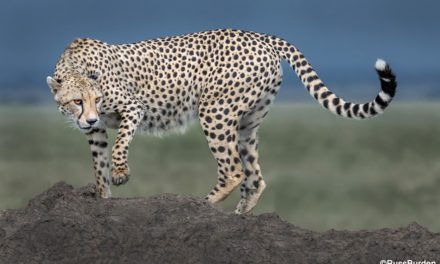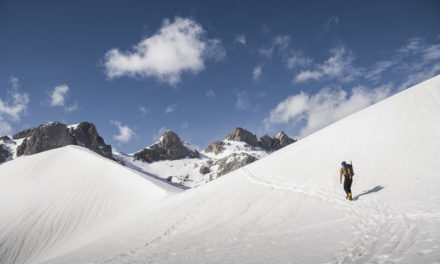
Before I began shooting color photography (I’d done black-and-white since I was 6 years old), I studied the work of painters and viewed hundreds of paintings. I learned how painters create both what they see in front of them and what they want to see, so that you can feel how the work comes from their hearts.
The study of paintings has impacted my photography greatly. I spend a great deal of time watching the interaction of light with objects as it plays about in various scenes in nature. That has made me slow down and see nature on a much more intimate level. For this project, I literally focus on the light as it passes over and across the lily pads. I stalk a composition. I may be wading deep into the water, all the time calling on past experience to predict the passage of the light, waiting patiently for it to hit the perfect spot to create exactly the image that I’m imagining.
I was inspired to do this project primarily because I love Monet. My goal was to create work that shows the beauty of ponds: the magic of their quiet serenity. So many people never see it, because they don’t spend the time required to see it. I shot my very first lily image back in early 1986, and this project is still ongoing; it truly feels like it will never be finished because nature is always creating and making new images for me to discover.
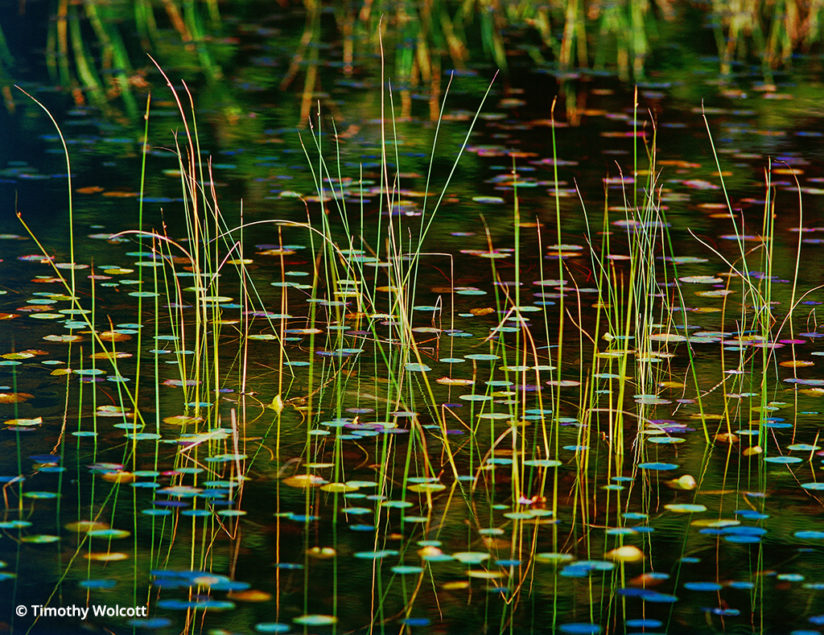
I’ve been following the ponds and waterways of this country for more than 30 years, looking and scouting for new shots. Yet so far, in all that time, I have found only seven ponds that have just the right combination of spring waters, lily pads and trees to make great imagery. That’s partly because the lily pads on these ponds turn colors, because their cold spring water keeps temperatures down so they don’t turn brown. They’ll stay around longer and keep turning colors, plus their surfaces reflect the colors of their surroundings.
All images were shot in the light of early morning. I’ve learned that the composition and scene you want to create dictates what gear you need to use. That’s why I shoot with medium format or large format, and why I carry a massive amount of photo gear with me. Typically, I’m carrying two bodies and backs and 10 lenses in a backpack, with two tripods, a ladder and a 500mm lens, which adds up to about 75 to 100 pounds, depending on which tripod I’m using.
Having used both color film and digital, I’ve learned that color film has no special advantage over digital except that it teaches you to shoot less and have more purpose when you click the shutter. As it has evolved, I find that digital gives more colors, more accurate colors, more dynamic range and greater resolution.
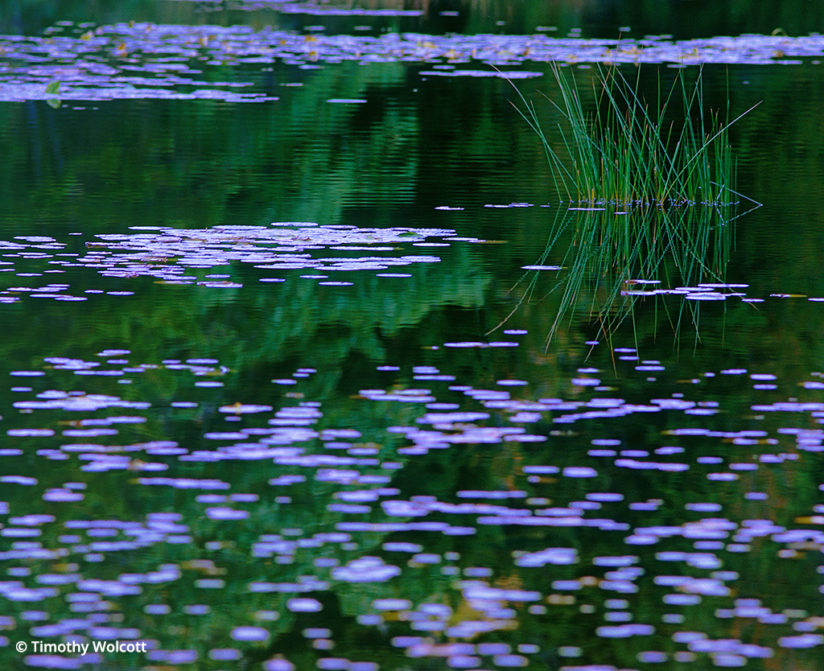
People often say that these images have the feeling of something unreal or otherworldly, but for me, they make me think of Monet and what he must have felt when he was creating his amazing paintings. Each has its own unique beauty, and each image successfully captures what I intended. In some ways, I like “Quiet Symphony” more than the other two images featured here due to its rarity of being captured as a panorama with a great background of trees.
For photographers who are interested in shooting scenes like these, I’d suggest that you spend time simply watching, looking and seeking out what you want to see as your final image. I like to use framing cards to create the composition and watch how the light plays on the lilies. I find that the best light for these images is low light.
Inspiration is supremely impossible to quantify or break down into a process. Never question what makes your heart race. Always go with your creative senses. Never second-guess what stops you in your tracks. Then, once you’ve found that great composition, take the time to watch it in all kinds of different lights. See what happens. Don’t be satisfied until you know it’s right.
See more of Timothy Wolcott’s work, including additional images from this series, at timothywolcott.com. You can also follow him on Facebook at facebook.com/TimothyWolcottPhotography and Instagram @timothywolcottphotography.
The post Ode To Monet appeared first on Outdoor Photographer.

